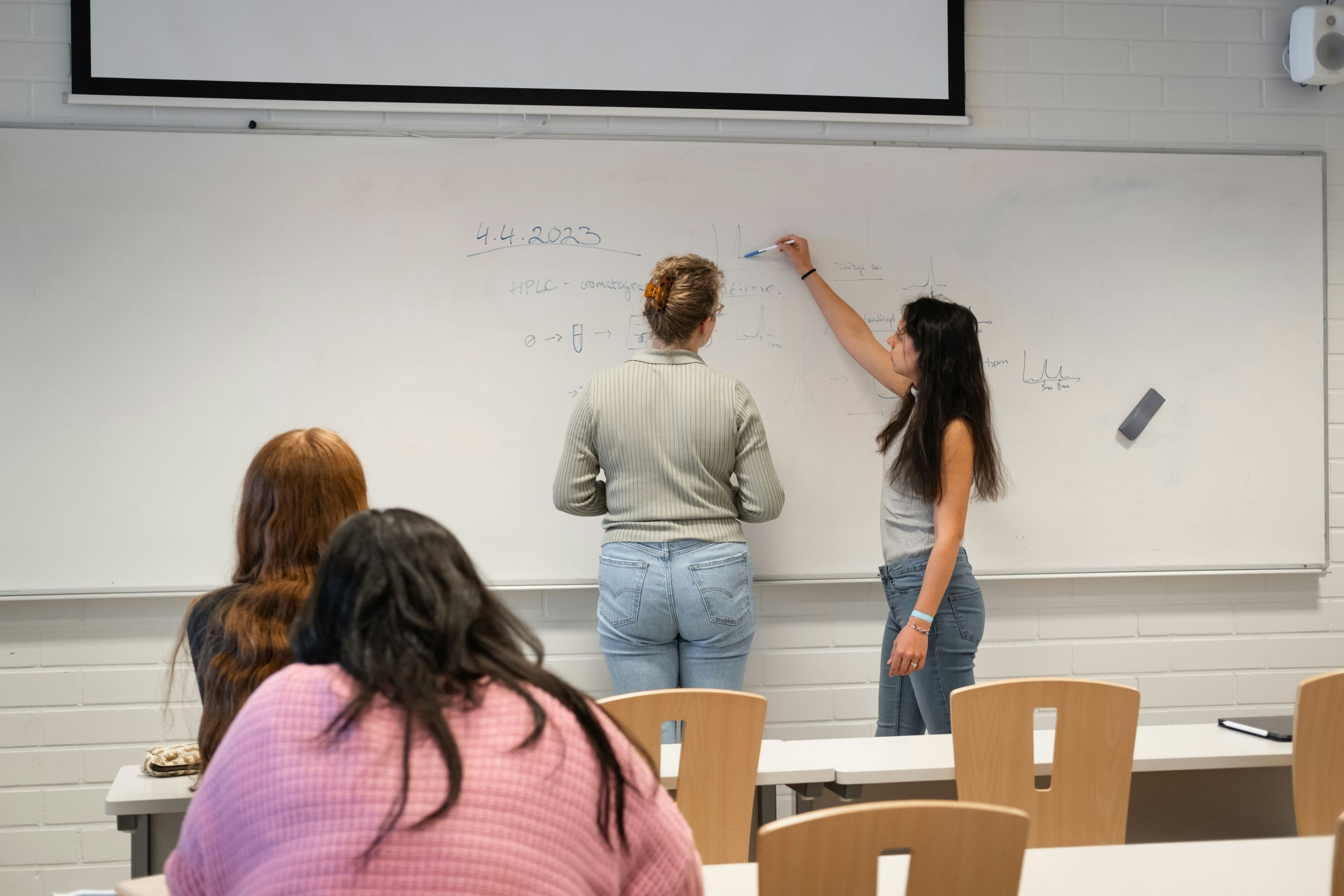Our students are energetically clapping and egging each other on as they play a game in their English Lab class. They love competition and are motivated by peer approval so participation is high.
The catch: this group of high school freshmen read significantly below grade level and they’re playing a word game using spelling and reading strategies.
Angie Currier has taught high school ELA students since 1998, with a one-year stint as a school media specialist on an emergency license, but she quickly realized her heart was truly in the classroom, teaching reading. Rarely has she seen students this excited about learning to read.
Molly Wirt, on the other hand, has seen this type of enthusiasm fairly regularly but it is from seven year olds. She has taught reading in the elementary grades since 2010. She transferred this school year from second grade to the high school in the same district after the death of her husband from cancer. Molly has two young children at home and wanted to try her hand at older, more independent students, while still helping students find their love of reading.
We co-teach small reading intervention classes for freshmen who are significantly behind in reading abilities. We are specifically targeting students who do not have other support through IEP’s. Some students do have 504’s. Many of them can read well enough to have gotten by in school, but they are entering high school with significant gaps. Like many adult Americans, our students see English as an irrational jumble of letters that other people just seem to understand. Between Angie’s high school experience and Molly’s lower grades knowledge, we’ve had an interesting opportunity to brainstorm, test theories, and move forward accordingly.
“Our students, who generally respond with resistance or lethargy to learning to read, are engaged with each other, laughing, focused, and really passionate in their competition.”
After a few weeks of false starts with a number of ideas ranging from moderately effective to downright miserable for the us and our students we landed on a format:
- Self selected silent reading
- Writing in response to their reading
- Read 180 two days per week
- Comprehension strategies
- Academic support for other classes, most specifically English 9
Back to Basics
At the beginning of the school year, we quickly understood what was still missing was the fundamental instruction of reading multisyllabic words at the high school level. Most of these students did not receive systematic phonics instruction at the elementary level as the pendulum had swung away from direct phonics instruction. The problem with comprehension strategies in high school is the assumption that the students can already read most words. Many high school students still stumble with many words and then default to skipping them altogether. Comprehension continues to break down from there, and students quickly lose motivation to read anything. Rigorous instruction of comprehension strategies will not fill the gap for students who can not read multisyllabic words.

We could find lots of information about how to help students read at the elementary level, but what happens when they are in high school and still cannot read accurately and fluently? There are lots of books about reading strategies at the middle and high school level, but very few about how to teach students the fundamentals of reading when they are older, while preserving their pride and dignity.
Molly experienced this first hand as she tried to apply her elementary reading teacher knowledge to deliver instruction to a room of freshmen. Unsurprisingly, in hindsight, it did not go well. Even though we weren’t reading rhymes about two vowels going walking or Sneaky E there was absolutely no student buy-in to get back to the basics of nonsense words and vowel sounds.
Meanwhile, about eight weeks into the school year, while looking for new teaching reading books (especially for high school), Angie found a book about teaching spelling rules called Uncovering the Logic of English: A Common-Sense Approach to Reading, Spelling, and Literacy by Denise Eide. The crux of this logic-filled book is there are 31 spelling (and reading) rules that govern our language. Our thought process was that if we can teach them rule-by-rule throughout the year, then our students who struggle so much can have a much better access to the printed word, along with improving their spelling and writing abilities. Multisyllabic words are usually where students stumble, and this is where we started.
Angie created a workbook to go along with these rules so the students would have access to all of the information in the same place. They take notes for about 10-15 minutes several times per week. Then they practice those skills with small whiteboards in front of them after we have introduced the new rule. The first time we taught the students how to figure out how many syllables were in multisyllabic words was the first time we saw a glimmer of student excitement and engagement when it came to the systematic process of learning how to read.
Playing with Words
After teaching some of the rules, and practicing individually, we placed our students in small groups with vertical surfaces. Our district had recently provided PD for Building Thinking Classrooms, which encourages utilizing vertical surfaces to engage high school students. We found that, while many are initially resistant to get up, it ultimately brings energy to what they are doing.
One teacher spells an unfamiliar word for them, one letter at a time, with no context while a student from each group writes it on their vertical surface. The groups receive points for conferring amongst each other on the following tasks:
- How many vowel sounds are in the word? This tells them how many syllables are in the word, which helps them decode. How many syllables are in the word? Students write the number on their surface. Most words they practice with are between 4-6 syllables.
- Can the group pronounce the word correctly?
- What is the most accurate definition OR the funniest (inaccurate) definition. Students consistently utilize the meaning from at least one word part, which demonstrates their understanding and supports their work on root meanings in their English 9 class.
- Can the group state the corresponding rule that was taught AND explain their reasoning? Students are encouraged to reference their workbooks for the rules and explanations.
Cell phones are banned in the game. Any group seen with a cell phone loses all of their points for the round. One student acts as judge and awards points. At the end of a round, the judge relinquishes his/her role and chooses someone else to be a judge, then takes his/her place in a new group. This makes the teams relatively fluid. The winning team gets a small prize. (Our students got lollipops.) Typically, we got through six or seven words in about 20 minutes.
“By teaching the logic of English, we are unveiling the process of reading words to students who have spent years being overwhelmed by increasingly complex text.”
Our students, who generally respond with resistance or lethargy to learning to read, are engaged with each other, laughing, focused, and really passionate in their competition. Each week, several students typically ask when we are going to compete again. By working cooperatively and competitively, these scholars leave with more strategies about how to read multisyllabic words and they are increasingly motivated to learn more rules next week. By the end of the school year, our plan is to have all of the rules taught and our students will have word attack strategies. By teaching the logic of English, we are unveiling the process of reading words to students who have spent years being overwhelmed by increasingly complex text.
Resources
Please login or register to claim PGPs.
Alternatively, you may use the PGP Request Form if you prefer to not register an account.



